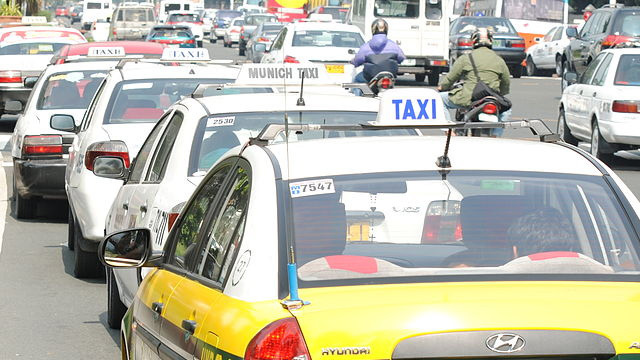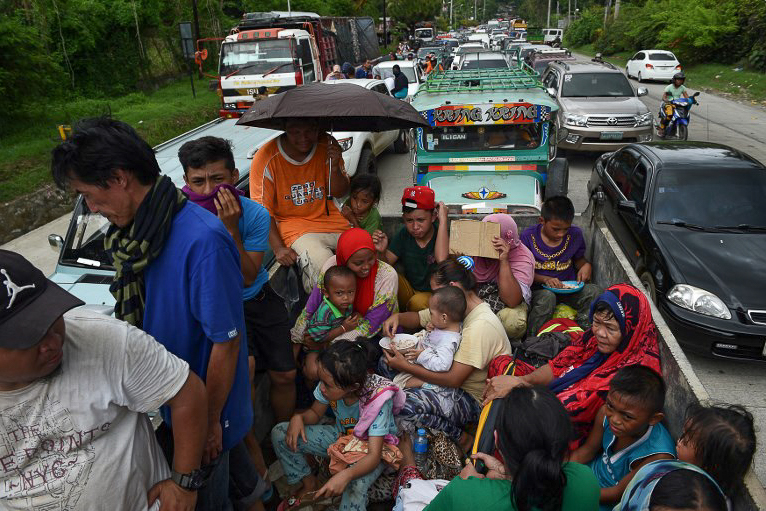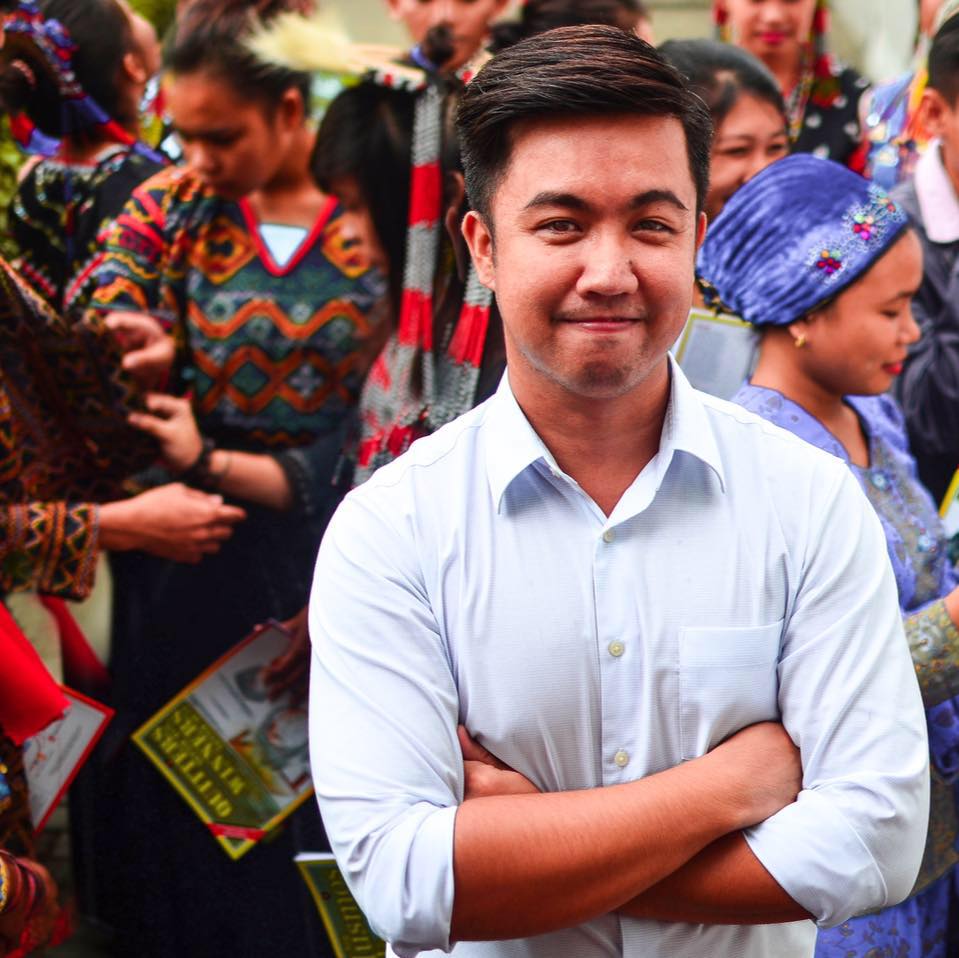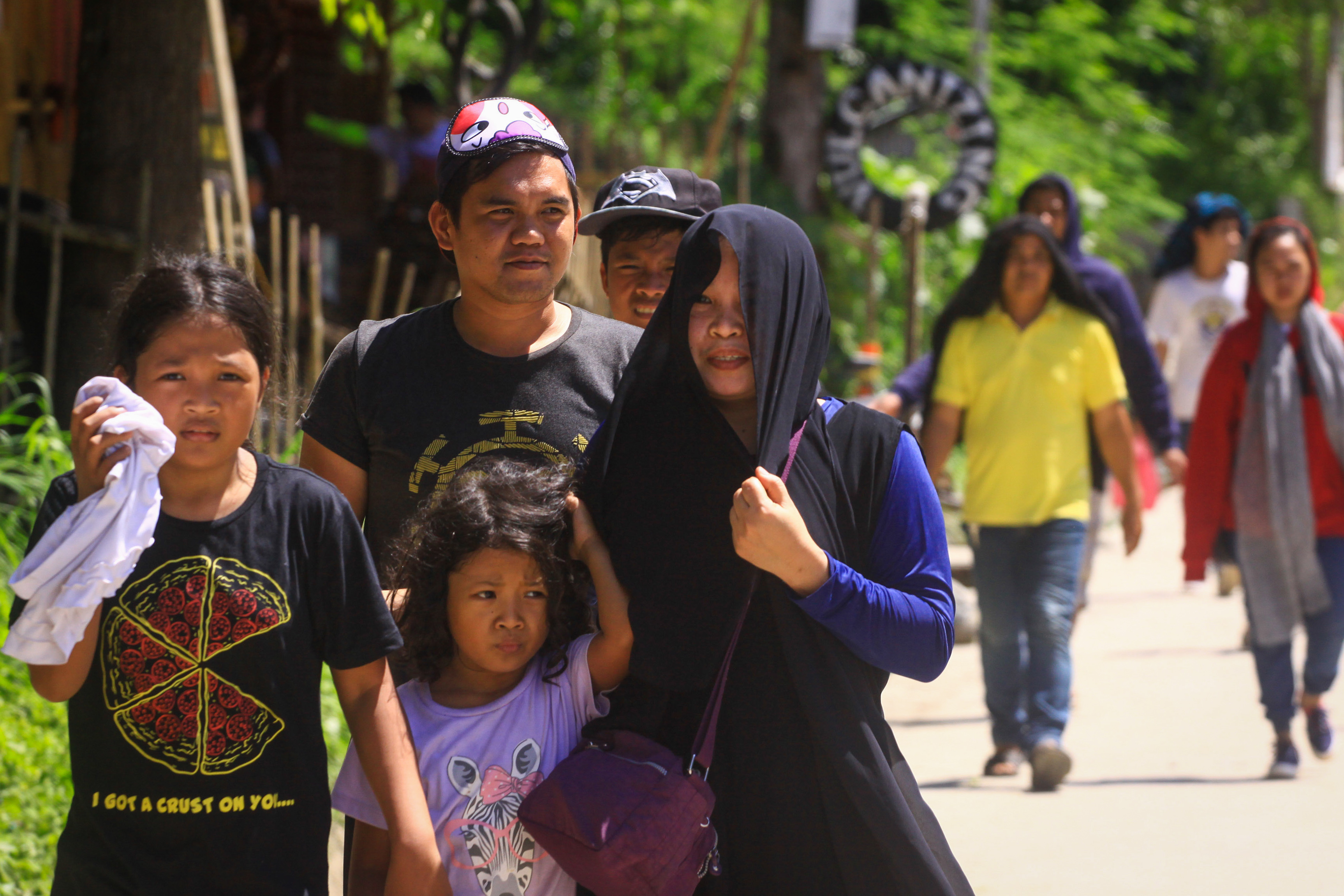![COUNTRYSIDE TRANSPORT. A typical overloaded tricycle in rural Philippines. Photo courtesy of BlueInk.news]()
CEBU CITY, Philippines – Two people died, including a toddler, while 6 others were injured when their van collided with a passenger bus along the national road linking this city to Tuburan town on Tuesday evening, May 16.
The fatalities were identified as driver Napoleon Mahinay and 3-year-old CJ Senining, who was seated in front.
Two other children were in the van – Trixie Senining, 8; and Kates Mahinay, 2, both seated in the back. Like van companions Victoria, Francisca, and Nelson Senining; and Marjie Mahinay, they sustained injuries, but are safe.
The survivors were brought to an emergency hospital in the town but were later transferred to a private facility in Cebu City.
“We have yet to talk to the survivors to also get their side. Some of them, especially the kids (Kates and Trixie), are still in shock and Nelson kept crying when we visited,” said Police Officer 3 Jameller Palanas Jr of the Tuburan Police Station.
Palanas said Mahinay and his group just attended a birthday party and were heading home to Barangay Tabunoc in neighboring Tabuelan town, when their van collided with a Ceres Lines bus driven by 30-year-old Ruben Umpad at around 8 pm.
Umpad surrendered to authorities but said he was occupying the correct side of the two-lane highway. He said he didn’t notice the other vehicle until the crash but admitted that he was driving fast, and the road was not well lit.
Chief Inspector Rolan Aster, Tuburan police chief, said the investigation is ongoing. His team is verifying initial suspicions that the van driver was driving under the influence following drinks at the party; or that Umpad, who had been traveling from Mandaue City and driving for over 100 kilometers straight, fell asleep at the wheel.
Serious problem
Road crashes, the fifth leading cause of death among Filipinos from 2005 to 2009, are all too common in the province of Cebu. (READ: IN NUMBERS: Road crash incidents in the Philippines)
In the administrative capital, Cebu City, where the traffic system is burdened by a massive volume of vehicles and pedestrians, there is a daily average of 80 road crashes not unlike, and in no way less violent, than the incident in Tuburan.
That figure goes back to 2013, when the Cebu City Traffic Office began collating and processing data from field reports and logbook entries of traffic enforcers, according to Erwin Restauro, assistant chief of the CCTO Communications Section.
Restauro said that at the time, data was collected solely for purposes of traffic management – identifying congestion according to street and time and computing travel time.
CCTO chief Rafael Yap said in a separate interview that he hopes the crash figures and fatalities in Cebu, especially among children, will go down. He noted that the CCTO is currently participating in a pilot project on road safety.
The project, he explained, had led to their acquisition of World Bank-funded web-based system Data for Road Incident Visualization, Evaluation and Reporting (Driver).
According to Ronie Nadera, officer-in-charge of the CCTO Communications Cection, Driver allows the CCTO to collate road crash data and map incidents to draw attention towards other causal factors like road design, condition and safety, vehicle safety, driver behavior, and others.
“The data is not yet made fully available to other agencies but this is where things will logically head because road safety is a multi-agency concern,” Nadera said.
A different driver
Since late last year, the CCTO has been migrating data from its old system to Driver, recording new incidents while slowly settling the backlog.
As of April, Driver has data on 398 road crashes in Cebu City, with 8 deaths.
“There are more but they just have not yet been logged into the system because it is also a tedious process,” Nadera explained.
Driver also computed the cost implication of the 398 crashes: P151,580,000 in economic loss; P72,800,000 in fatalities; P287,300,000 in injury-related costs; and P60,580,000 in property damage. Nadera, however, was unable to provide the matrix used to establish the cost.
An issue of awareness, laws and enforcement
For Manila-based lawyer Sophia San Luis, approaches like better data collection during road crashes is just one cog of a complex system that, in the Philippines, is not yet completely there.
“We can’t approach this simply as an urban planning issue because this is not just about infrastructure and vehicle standards,” she said in an interview. “It’s also about the government’s capability to provide post-crash emergency care.” (READ: What laws help keep road users safe in the Philippines?)
Sitting as executive director for ImagineLaw, a nonprofit organization taking part in a global campaign for safer roads, San Luis said the government’s implementation of laws promoting road safety leaves much to be desired, according to the World Health Organization Global Status Report on Road Safety in 2015. (READ: Road crash incidents are no accidents)
ImagineLaw believes the government should improve existing road safety regulations, and require the use of child restraints, which could have prevented the death of the 3-year-old victim in the Tuburan crash by a probability of 54% to 70%. (READ: What's lacking in our road safety laws?)
Global challenge
WHO has identified 5 risk factors for road users: speed, use of seatbelt, use of child restraints, use of helmet, and driving under the influence of alcohol or drugs.
Around the world, road crashes kill more than 1.2 million people every year, costing governments about 3% of their gross domestic product, according to WHO.
Road crashes are also likely to claim the lives of 300,000 Filipinos by 2020, according to the Department of Health.
“Despite this massive – and largely preventable – human and economic toll, action to combat this global challenge has been insufficient,” WHO director general Margaret Chan wrote in the Global Status Report on Road Safety 2015.
In 2010, the United Nations General Assembly adopted a resolution declaring the Decade of Action for Road Safety (2011-2020). The resolution urged member states to take steps toward safer roads and mandated WHO to monitor the efforts taken.
The recently adopted Sustainable Development Goals – a global agenda that aims to address a host of economic, social and environmental challenges by 2030 – also include curbing road traffic deaths and injuries by 50 percent by 2020.
With a 16% rise in the number of vehicles globally over the last 3 years, Chan said, “Much more must be done to stop the death and destruction on the world’s roads and to achieve the ambitious target for road safety.”
In the Philippines, the Land Transportation Office (LTO) registered 8.7 million vehicles as of 2015, an increase of more than 2 million in just 5 years. (READ: LTO to push for stricter driver's license exams)
Gaps in law and enforcement
Road traffic injuries in the country are under-reported, according to WHO.
In 2013, the Department of Public Works and Highways recorded 1,513 deaths, but the actual number could be as high as 10,379, based on WHO estimates.
Incomplete figures notwithstanding, ImagineLaw believes solutions are obvious enough to spot.
While an existing law sets speed limits throughout the country’s highways, implementation is weak and the law itself does not consider road width, number of lanes, and presence of barriers. Many local government units also do not classify their roads, and set and enforce the corresponding speed limits.
While a helmet law is in place, enforcement varies from town to town and city to city, Moreover, the law has no fitting requirement. (READ: Motorcycle riders can't wear helmets in some parts of Bulacan?)
Enforcement of the law against drunk-driving, meanwhile, is hampered by a lack of breathalyzers.
While the country has a seatbelt law, it does not require restraints for backseat passengers of jeepneys, buses, and vans similar to the one in the Tuburan crash.
Moreover, while the seatbelt law, passed in 1999, tasks the LTO to create rules and regulations on the use of child restraints, the agency has yet to do so. It has also not yet enforced existing provisions like disallowing children from sitting on the passenger seat, as what happened to the child fatality in the Tuburan crash.
Children on board
Every year, about 10 million children suffer from road traffic injuries around the world, with more than 260,000 deaths recorded in 2004 alone, according to WHO.
The WHO said this is preventable with child restraint systems, together with other road safety measures. (READ: What you need to know: Law ensuring kids' safety on motorcycles)
Known generically as child sets, child restraint systems are devices designed to keep a child firmly secured in the seat, keeping him or her from being thrown against the car interior or ejected from the vehicle in the event of sudden brake or collision.
It is not a popular in the Philippines, primarily because it is costly. In the Philippines, a child restraint system can cost anywhere between P4,000 to P20,000.
“(But) if I were a parent, if I want to make sure that I am protecting my child, I would not need a law for me to recognize that my child would need to be properly buckled in my car,” said Evita Ricafort, policy adviser for ImagineLaw. – Rappler.com
This story was originally published on BlueInk.news
Learn more about Filipinos' safety on the road by visiting the Road Safety Awareness microsite.
![]()




















































